Topics for Storytellers
ALPHA BABES
Wonder Woman, Captain Marvel, Katniss Everdeen, Black Widow, Supergirl, Imperator Furiosa, Xena Warrior Princess…sure, they’re Alpha Babes. But so are real females who take a stand like Malala Yousafzi, Greta Thunberg, Erin Brokovich, Jane Goodall, and Veronica Franco. And just look at the growing equality and anti-harassment movements among women world-wide.
Whether you’re creating super-heroines or putting ordinary people in extraordinary situations, sometimes it just takes an Alpha Babe to accomplish the goal.
Learn the qualities of the Alpha Babe, explore the transitions to become one, and use the repercussions of being one to enrich your characters and your stories.
In our quest for ever better roles for women, what better inspiration than outstanding, complex individuals of honour, daring, innovation, caring, loyalty and vision — who just happen to be female.
In this course we will explore different types of Alpha Babes: mythic heroines, historical heroines, world leaders, background heroines, mega-mothers, super-heroines, loyal lovers, compassionate warriors, and more.
*****
ArchePaths – 5 Character Paradigms for Any Story
Warrior, Magician, Scientist, Clergy, Lover – find and develop the best ArchePath for your character – regardless of gender, age, or story genre.
The ArchePaths are Paths a person follows, a style of being, a type of approach to life. Any archetype can be on any of the Paths.
The ArchePaths are valuable profiles for creating dynamic, believable characters and taking them through dramatic character arcs.
Learn the hopes, fears, strengths, weaknesses, symbols, styles, and more that guide the 3 levels and 3 approaches of each ArchePath.
Build conflict by pitting characters on the same Path against each other.
Juxtapose characters on different Paths to the best effect.
*****
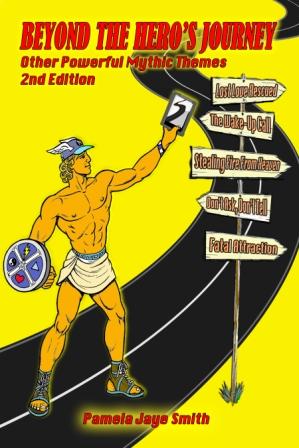
BEYOND THE HERO’S JOURNEY: Other Powerful Mythic Themes
Stuck on that Hero’s Journey? Your story not fit that pattern? Then you’re probably not telling that story. That’s okay.
There are dozens of other powerful Mythic Themes: The Wakeup Call, Fatal Attraction, Search for the Promised Land, The Secret Identity, Stealing Fire From Heaven, and many more.
Explore some of the most popular Mythic Themes, their defining myths, and their mythic and metaphysical meanings.
See examples of other stories on that Theme in many genres and styles.
Get specific Plot Points to use in your writing – touch upon at least six of a Theme’s Plot Points and enchant your audience into that collective unconscious where all our best stories live.
The 3 Mythic Statements each story needs.
Learn how to align your story with timeless themes, yet retain your own unique style.
[from Pamela Jaye’s book BEYOND THE HERO’S JOURNEY]
*****
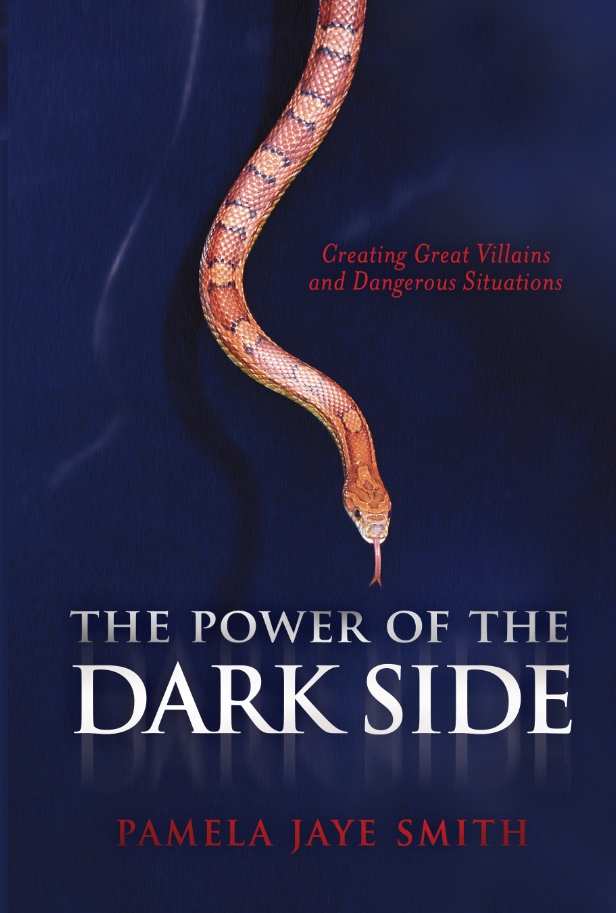
CREATE GREAT VILLAINS
A great Villain may kill your hero – but nothing kills a story faster than a weak antagonist.
Explore different types of antagonists: anti-heroes, seducers, pirates and rebels, bumblers, psychos, ghosts and aliens, and more.
Learn to use back-story, world view, and the Lure of the Dark Side to create rich, compelling Villains.
Examine many Devices of the Dark Side and learn how to select the most appropriate ones for your Villains.
Find different ways to confront Villains.
[from Pamela Jaye’s book THE POWER OF THE DARK SIDE]
*****
CREATING OUR NEXT MYTHOLOGIES
What’s the newest concept? What’s our next mythology? What does your audience want and need these days?
The nature of the globalized world, our social interactions, cultural norms, religious mores, gender relationships, interaction with nature, understanding of the cosmos…all are rapidly changing.
We need new myths and new versions of the old myths to help people understand new realities and new ways to be in the world.
We also need to mine and honour the old ways when they hold timeless truths.
Explore paradigms that address our present and our future.
Learn a structure for character arcs and plotlines that’s both mythic and timely as well as adaptable across all media platforms, from features to TV to XR.
See how trends move through media and how they both reflect and influence reality.
Align your own inspiration with incoming ideas and ideals so you can help create and shape our next mythologies with your own unique voice and perspective.
*****
HEROES, ANTI-HEROES, SUPERHEROES & HEROINES
What makes a Hero and why do we need them?
Why is the society around an Anti-hero so important?
What’s the best balance between “real” and “amazing” for the Superhero?
How has heroism changed over time – Noble-Hero, Victim-Hero, Anti-Hero, Super-Hero – and what does this mean for your story?
With examples from myths to games and multi-media, we’ll explore the qualities that set these special characters apart and learn tools for their creation and character arcs.
Learn to create and craft amazing heroic people to give us the inspiration all audiences hunger for.
*****
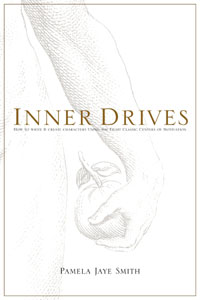
INNER DRIVES: Create Unique, Memorable Characters Using the Chakras
One of a writer’s biggest challenges is to create unique characters that sound, look, and act different from each other. Use the Chakras to create dynamic believable characters.
Individuals move between “survival”, “individualism”, “altruism” and many more. Each physical-psychological-philosophical Chakra has unique hopes, fears, strengths, weakness, actions, speech styles, etc.
Create internal and external character conflict by placing people on different Chakras then challenging and/or inspiring them to change.
Motivate, combine, and transform your characters using the INNER DRIVES and tap into the power of mythic heroes and heroines.
[from Pamela Jaye’s book INNER DRIVES]
*****
MAKE YOUR MEMOIR MYTHIC
“We have all been there, done that. We count on our writers to tell us what it all means.”
Facebook and endless tweets aside, who really wants to spend time reading about your daily routines, your pet peeves, your shallow reactionary opinions…? Practically nobody.
We do, however, care greatly about the unique personal observations you make about the world around you and within you. Because we are all connected in so many ways, you can shed light on some of the eternal mysteries of our existence.
Sure, tell us about your adventures, but make a solid point about them that can help or inspire us.
Absolutely, give us your romantic yearnings and entanglements, but relate them to the commonalities of love, jealousy, heartbreak that creates great poetry and literature. Shakespeare turned puppy love into the incredibly moving Romeo & Juliet.
Make your own descent into hell and your redemption into a cautionary tale, a way we can learn from your experience and not have to go there ourselves. The Greek tragedies were designed to show us what not to do.
Yes, please do tell us what you imagine for the future – utopian, dystopian, man vs. machine or man-is-machine, space travel, sustainable peace, but give us some way to identify with you and what you are proposing.
How to do all that? Use the classic tools of story-telling: Mythic Themes, Archetypes, and Symbols. These tools work well for any genre, any style, and can give your memoir depth and brilliance.
Your story is our story – if you tell it well and craft it to draw us in, give us new insights, move us, and perhaps also greatly inspire us.
*****
MASTER YOUR CREATIVE PROCESS
Whether it’s for a story, a project, a class, a relationship, etc. the 4-part creative cycle affects everything on small and large scales, from a single small plant to a civilization to a star system. Learning to discern where in the process something is can give you all kinds of insights and advantages to influencing the outcome and enjoying the process.
From initial inspiration through writing, research, re-writing, polishing, pitching, production, marketing, and distribution – increase the power of your creativity with these timeless, practical tools.
Explore the 4 Stages of the Creative Process.
Learn about timing-and-order, balancing emotions and mind, the power of silence, the fine art of collaboration, celebration, and moving on.
Get a heads-up on the specific pitfalls of each stage and how to avoid them.
Use these universal underlying patterns both for yourself and for your characters as they go through their own cycles of desire, disappointment, distraction, determination, etc.
Now you too can work with the natural cycles of creativity to become much more efficient and effective.
*****
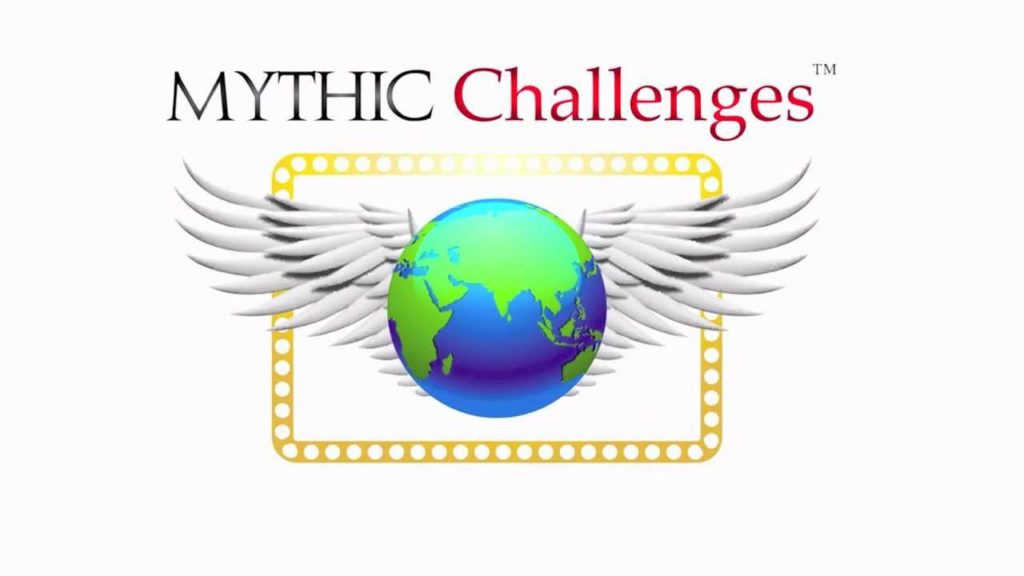
MYTHIC CHALLENGES: Create Stories that Change the World
Is your story issue-oriented? Do you want to raise awareness and motivate your audience to action?
Learn to use the classic story tools of Mythic Themes, Archetypes, and Symbols to give your story global appeal.
Address one or more of the 15 Global Challenges facing humanity today as protagonist goals and for dramatic conflict [water, women’s rights, rich-poor gap, technology, international organized crime, etc.]
Identify believable storylines, approaches, methods, and techniques for your characters to affect change.
Put yourself ahead of the curve-of-change with the story tools in this seminar.
[Our pilot program worked with youth in an LA high school and their sister schools
in Afghanistan, in conjunction with the U.S. State Department.
Mythic Challenges won the FutureVision Award from c3: Center for Conscious Creativity.]
*****
MYTH, MAGIC, METAPHYSICS: How to Use Them in Your Stories
The supernatural and the unexplained are all the rage: vampires, zombies, magic, channeling, crop circles, remote viewing, psychic spies, aliens, angels, altered states, ESP, time travel, multiple dimensions….
Explore the geography and psychology of these other realities, learn ways to use them to give your stories internal integrity and unique power.
What are the true parts of a myth?
What are the different types of magic and what do you use them for?
How many laws of physics can you bend and still have believability?
What do you need in the first ten minutes of your story to shift the audience into your special world?
*****
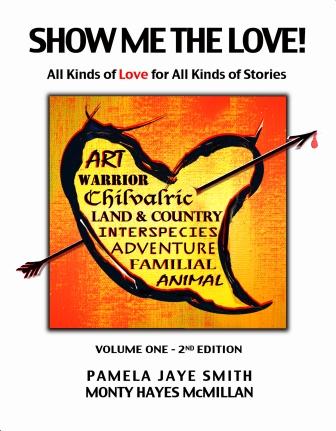
SHOW ME THE LOVE! All kinds of Love for All Kinds of Stories
Every story needs some kind of “Love”.
Romantic stories have plenty of love in them, but there are wonderful opportunities to deepen your audience’s engagement in other kinds of stories by bringing in other kinds of love, too, be it familial love, love of adventure, love of land, friends’ love, love of death and destruction, and more.
Utilizing classics from the past to examples of the present we’ll focus on how to “find the love” in any genre or style. It is love that permeates our emotional lives and drive our actions.
Include one or more of these in each story to give your characters more depth and create more opportunities for conflict, change, and growth.
When well-written, the love aspect of a story lives on in the heart and minds of your audience.
[from the book by Smith & McMillan SHOW ME THE LOVE!]
*****
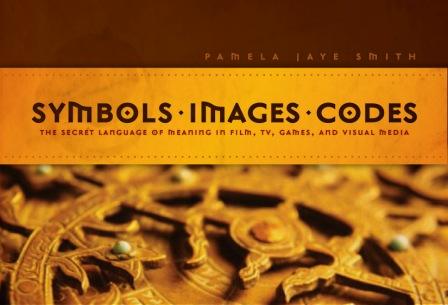
SYMBOLS & IMAGERY: Putting the “Visual” in visual, print, and audio media.
Humans are first of all visual creatures, and symbols are basic powerful communication tools. The more consciously you use symbols, images, and codes in your stories, the more effective your message will be.
Using appropriate visuals will heighten the emotional impact of your story and will connect your audience to the rich stream of meaning — conscious and unconscious — that flows through humanity and our arts.
Learn how symbols and images have been used in story-telling across ages and cultures, and how you can do the same.
Explore powerful symbols and imagery used in film, with examples.
Learn about the 3 Levels of symbolism and how to combine them.
Get guidelines for when and how to effectively use symbols and imagery.
[from Pamela Jaye’s book SYMBOLS.IMAGES.CODES]
****
THE WARRIOR WAY – ‘Wise Heart, Sharp Sword’
From chivalrous knights to Special Forces, religious warriors to fallen warriors, this Archetype is a rich story source with eternal appeal.
The Warrior Path needs some reviving these days, to bring back the legendary qualities of wisdom, courage, and compassion. Putting your characters into Warrior situations provides a great opportunity for conflict, drama, and character arcs.
Different media forms offer differing opportunities to explore the Warrior, be it in features, TV series, XR, webisodes, and more.
Explore Warrior myths, characteristics, strengths, weaknesses, ways and means.
Learn to use the powerful Archetype in your own characters and stories.
And learn practical Warrior Ways for you, too.
[Pamela Jaye served on a U.S. Military think-tank for
8 years advising on the Warrior Archetype & Spirit]
*****
WRITE YOUR PERIOD PIECE RIGHT
- Create dialogue that correctly reflects the time and place of your story yet is accessible to today’s readers and viewers.
- Establish the norms of the day so that your characters’ actions are justified.
- Link otherwise alien cultures to contemporary times with the touchstones of human nature, archetypes, and timeless Mythic Themes.
- How to use well-chosen words to create the world of your story, be it 17th century England or 45th century Alpha Centauri.
- Descriptive techniques.
- Weaving the “look” of your screenplay strongly enough to last through the development and filming processes, where the collaborative nature of media-making too often shreds the writer’s original vision.
*****